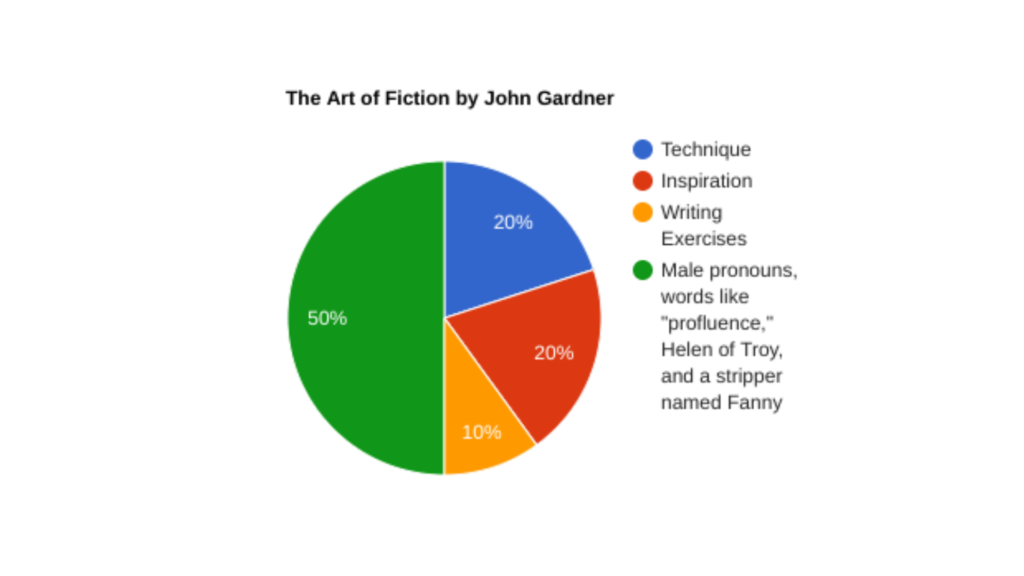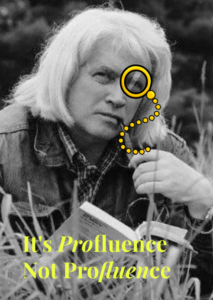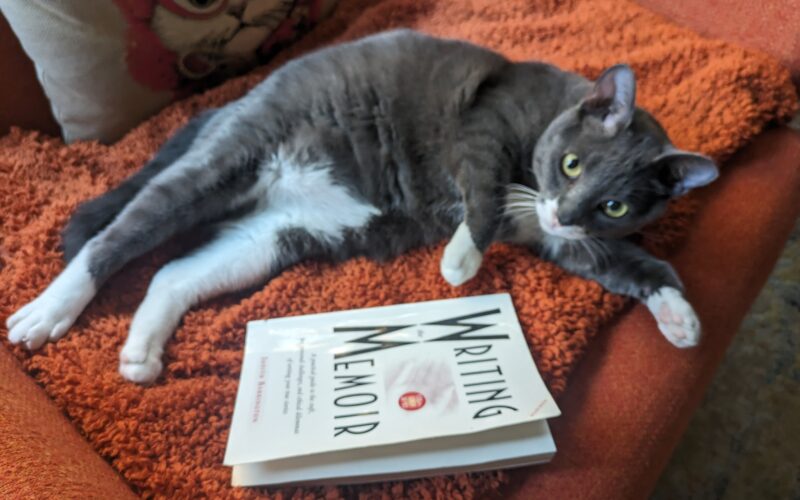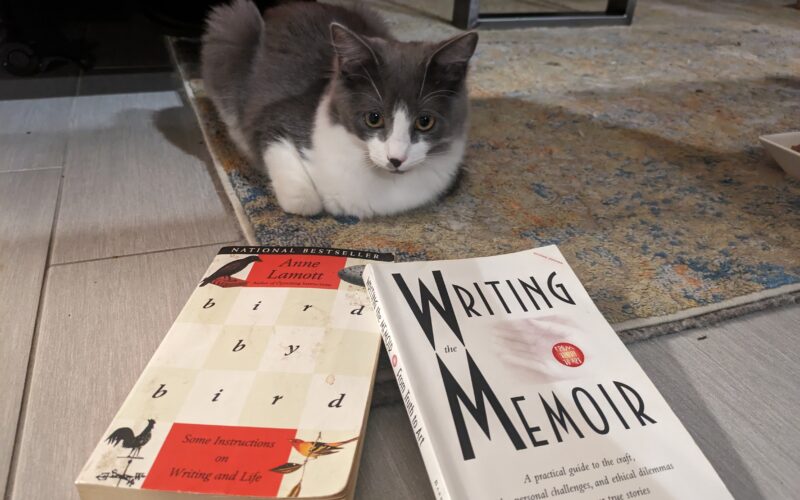The Final Take - The Art of Fiction
Thinking of reading The Art of Fiction, “Young Writer?” Listen to this podcast first.
Despite dying in a motorcycle crash in 1982, John Gardner achieved immortality (at least in the writing community) with the posthumous publication of The Art of Fiction: Notes on Craft for Young Writers. We’ve been studying and discussing this much recommended book over the past nine months (not full time, we aren’t crazy) and we have … opinions.
And stay for the preview for the next book on our shelf, Ray Bradbury’s Zen in the Art of Writing. Both books have “art” in the title, but they couldn’t be further apart on the writing advice spectrum. Don’t take our word for it, we have an interview with Ray Bradbury scholar, Phil Nichols who hosts the Bradbury 100 Podcast.

Phil Nichols with Ray Bradbury, 2008. (Photography courtesy of Phil Nichols).
What we Really think about Gardner
In The Art of Fiction: Notes on the Craft for Young Writers, John Gardner describes, philosophizes, and argues what storytelling elements, from specific detail and scene to genre and theme, achieve the “reader’s dream,” aka: the suspension of disbelief. Although he is most famous for the idea that a successful story never pauses the movie in the reader’s mind while they read, he does not spend much time showing the “young reader” how to do it.
The book is less about how to write a novel and more on what Gardner thinks makes for worthwhile literature. If you’ve never taking a creative writing course, then the book’s ideas on plot, character, and theme, as well as the theories on how stories are put together might be useful. However, the information comes with a big helping of sexism, gate-keeping, and literary snobbishness (circa 1982). The book has aged a bit like milk (and not the plant -based kind).

We will give Gardner props for one thing: his writing exercises are surprisingly good. How good? Check out our favorites with our contemporary interpretations on our Patreon page.
And Now for Something Completely Different
Starting next episode, we’ll be getting advice from famed science fiction and horror writer, Ray Bradbury. His book, Zen in the Art of Writing, is a collection of essays revealing the process he used to craft some of the most lyrical and influential science fiction / dark fantasy stories, like Fahrenheit 451, The Martian Chronicles, and Something Wicked This Way Comes. As a preview, Kim interviews Phil Nichols about Zen.
Phil Nichols did his PhD on Ray Bradbury’s screenwriting, edits the journal The New Ray Bradbury Review, and presents the Bradbury 100 podcast. He also teaches film production and screenwriting.
TLDR: Renee's notes on The Art of Fiction
Gardner's Key Terms & Vocabulary
Verisimilitude: Specific detail, which achieves and maintains the reader’s dream (suspension of disbelief), the simulation of reality in the reader’s mind. It’s detail and specificity in writing: describing, illustrating, creating the “dream.” It’s how one triggers suspended disbelief. Gardner says this creates a kind of “simulation of the real world” (22).
Profluence (monocle required for proper pronunciation): A coherent timeline of events in a story, which requires the balance of all elements of fiction working together to form a cause and effect relationship: character, theme, scene, style, etc.

Jazzing Around: Like jazz, it breaks the rules. The best jazz performers are virtuosos are on a completely different level to break the rules and not have it fall apart. They have to be master musicians, the technical quality to produce the music, and the brains that can think of how to change the music to do these various permutations to create something that is considered jazz.
Helen of Troy Moment: When a Craft Book Writer picks an analogy or example and they draw it out way past the point that it actually works and they’d be better off dropping it and go with another method of covering what they’re talking about. (see our Helen of Troy rant in Episode 4).

Parts We Recommend from Episode 9
Kim's Chapter Suggestions
- Chapter 1 “Aesthetic Law & Artistic Mastery”
- Chapter 2 “Basic Skills, Genre, and Fiction as Dream”
- Chapter 5 “Common Errors”
- Chapter 7 “Plotting.”
Kim was a big fan of the discussion about (and the term of) “Jazzing Around,” which Gardner includes in Chapter 4, but it probably isn’t worth reading a whole chapter on it.
Renee's Chapter Suggestions
Not as generous or kind, Renee only recommends reading Chapter 5 “Common Errors,” which you don’t have to read because she broke down each error on Patreon. Then again, she teaches Freshman Comp, so she is probably not to be trusted.
Gardner's Writing Exercises (aka, The Most Valuable Part of the Book)
Although we wouldn’t recommend the majority of this book to a young writer learning the craft, we have to give credit where credit is due: Gardner’s Exercises. Even with the examples and scenarios he provides (traditional gender roles, anyone?), they really do work out those writing technique muscles. (Seriously, some were quite a workout–listen in at the end of each episode and the bonus episodes to hear us lift these crafty barbells. Trust us, the gains are real).
To get a list of the greatest hits exercises or level up your mad description, plotting, or scene writing skills, join our writing community on Patreon.
Gardner's Best Advice
Renee gave Gardner some props on the following bit: As you write your novel, work unit by unit. Focus on the description without worrying about the scene coming up, or dialogue, or backstory, or whatever. Just take it one description, scene, string of dialogue at a time.
Renee is a bit of an over-thinker, a worrier, a red wine drinker…
Kim appreciated Gardner’s distinction between literary rules vs principles in Chapter 1 “Aesthetic Law and Artistic Mastery.”
Every true work of art–and thus every attempt at art–must be judged primarily, though not exclusively, by its own laws.
-John Gardner
In other words, there are no rigid rules or strict formulas that will produce good art. In that sense, we must critique a piece of writing on its own terms instead of a prescribed set of rules.
A Tribute to Ray Bradbury
In our next episode, we read Zen in the Art of Writing by Ray Bradbury.

Ray Bradbury, born in 1920 and died in 2012, was a literary powerhouse of pulp magazines, novels, screenplays, and essays. He is known mostly for his science fiction, notably Farenheit 451 and The Martian Chronicles series. He published more than 500 works over his lifetime and continues to influence our culture today.

















The Secret to Getting Your Short Stories Publish
Okay, maybe that's a bit of hyperbole, but not by much. In this stand alone episode we talk with Erik Klass, the entrepreneurial editor behind the submission service Submitit...